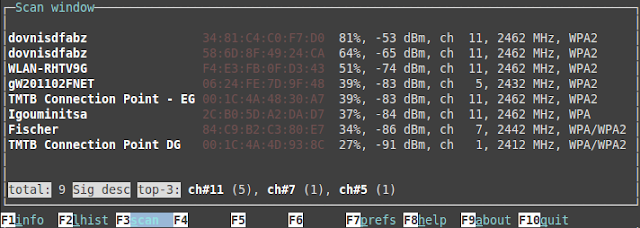Problem
Using Fedora since version F30 with Intel or Nouveau driver. I like it a lot because Wayland/Gnome works very well with monitors having different DPI, e.g. Retina Display on Notebook combined with an old office monitor. Recently I bought a new PC for working (Ryzen 7) and gaming (Nvidia Geforce RTX 2070). I installed Fedora 32 and Windows 10 on the new system and was happy to see my system working without problems. For work, I would use Fedora and for Gaming, I use Windows 10. I was very pleased with the Fedora experience, everything worked as smooth as silk, not tearing or flickering issues at all. (I had bad experiences in the past, normally the first thing I do on Linux is disabling the Nvidia card and use Intel Processor Graphic only.)
But after a few hours of working, I noticed that the system was not as fast as expected. `htop` showed that all 16 cores where utilized by gnome-shell for 2-3%. As soon as I had Chrome opened or doing stuff with Visual Studio Code CPU load on all cores spiked. After doing some research and experiments I discovered that my super fast RTX 2070 graphics card is not even near to be supported by the nouveau driver. Everything is done by the CPU, no hardware acceleration at all. As the system has no Intel Processor with integrated graphics, I tried the proprietary Nvidia driver again.
My System
Nice summary also available in Gnome Settings / About- Date (date -I): 2020-05-03
- Kernel (uname -r): 5.6.8-300.fc32.x86_64
- Gnome (gnome-shell --version): GNOME Shell 3.36.1
- CPU (cat /proc/cpuinfo | grep -m1 "model name"): AMD Ryzen 7 3700X 8-Core Processor
- Graphics (lspci | grep VGA): TU106 [GeForce RTX 2070] (rev a1)
Helpful Tools
- `echo $XDG_SESSION_TYPE` prints X11 or Wayland
- show current kernel parameters `cat /proc/cmdline`
- show currently loaded kernel modules `lsmod | grep nvidia` or `lsmod | grep nouveau`
- Instructions to install Nvidia driver
Changing Kernel Parameters
- `sudo vim /etc/default/grub` to edit `GRUB_CMDLINE_LINUX="..."`
- `sudo grub2-mkconfig -o /boot/efi/EFI/fedora/grub.cfg` to apply changes
- `reboot`
/etc/modprobe.d/
I'm not an expert in this topic, but I also needed to blacklist modules and set module parameters in `/etc/modeprobe.d/nvidia.conf`. To activate those changes it was necessary to regenerate the /boot/initramfs-* files. `sudo dracut --force` is the most simple and dangerous way as it generates and overwrites the intiramfs for the currently running kernel. Better move the existing initramfs away with `sudo mv /boot/initramfs-$(uname -r).img /boot/backup-initramfs-$(uname -r)` beforestarting experiments.
Findings
After following the [instructions](https://www.if-not-true-then-false.com/2015/fedora-nvidia-guide/)the system booted up fine and I instantly saw that moving windows or using Chrome
did not trigger high cpu load any more. Even WebGL Demos in Chrome were running with neglectable cpu load. But then I noticed I was running on X11 and not on Wayland any more. I googled around and could not find any useful information if it is possible to use the NVIDIA driver
with wayland. So I tried to enable it.
Enabling Wayland in Fedora32 for proprietary Nvidia driver
Comment out the gdm-disable-wayland in `/usr/lib/udev/rules.d/61-gdm.rules`# disable Wayland when using the proprietary NVIDIA driver
DRIVER=="nvidia", RUN+="/usr/libexec/gdm-disable-wayland"
Enable experimental kernel mode setting (from NVIDIA perspective)
- Add `nvidia-drm.modeset=1` to `GRUB_CMDLINE_LINUX`
- Add `options nvidia-drm modeset=1` to `/etc/modprobe.d/nvidia.conf`
- update grub and initramfs and reboot
Running on Wayland with proprietary Nvidia driver
After reboot Wayland was active, and I could log in. Looks promising. `nvidia-settings` was no longer working, but `nvidia-smi` was. Also lsmod shows me that the nvidia driver was active. Firefox and Gnome looked fine, no cpu usage spikes. By then it was time for lunch and I suspendedthe computer. After lunch I pressed Space and saw corrupted log in screen but was able to login. Unfortunately, all the graphics were corrupted, you could see only the rectangles of the windows. Still I was able to reboot, and my system was usable again.
I spent hours trying to diagnose and fix those issues, but no relevant errors in journalctl, and no findings with Google. It tried the systemd suspend mechanism as described in the Nvidia drivers readme but with no success. In the end I decided to go without suspend capability and just turn off and on again.
On the next day, I continued to do some work again. When using Visual Studio Code, Gnome immediately crashed. It seems that all applications running in Xwayland (a compatibility mode
for applications not running natively on Wayland) crashed after a while, especially after resizing the window. Just resizing an Xwayland app triggered the crash.





